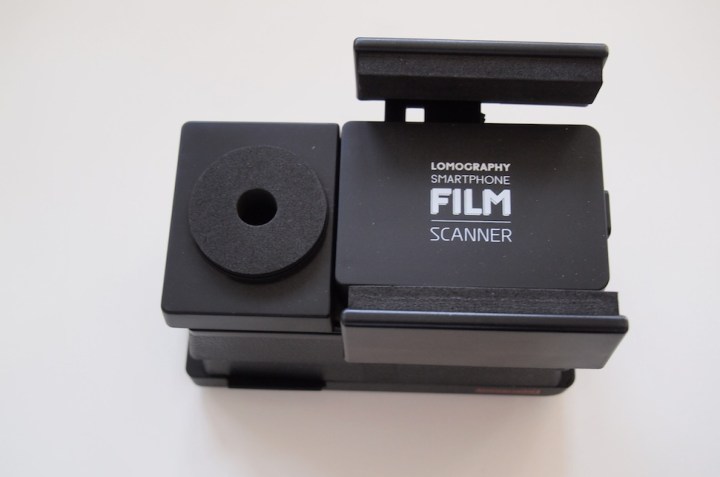
Update on April 28, 2014: Lomography announced that a new app is now available for the Film Scanner. The LomoScanner 2 offers “faster and more streamlined scanning experience,” the company says. The features include: a cleaner interface; manual controls to adjust picture quality; faster, easier panorama stitching; animation creation (LomoKino); sharing via social media; and adding filters. When we last reviewed the scanner, we thought the app needed more development. Lomography says the updated app was created in response to user feedback. It’s available right now, but only for iOS 7; an Android version is in the works. Read our review below.
Archiving is a big trend. Twitter is still trying to send out archives to all the users who requested them, the Library of Congress is doing the same, and gadgets like the Memoto life logging camera want to ensure you never lose a bit of the past. Now that nearly everything’s going digital, it only makes sense that your own film photos get the Web archive treatment, too. Lomography, the analog-based photography company, has just recently kickstarted its first foray into digital with the Lomography Smartphone Film Scanner. We goes hands on to show how you can transfer all your film photography straight to your mobile device.
Look and feel

The plastic stacks can be removed or added for the best distance your smartphone’s camera views the film. We tested the Lomography scanner with an iPhone 4S and a Samsung Galaxy S2 and only needed two stacks for the best focus. The neat thing about this scanner is its size; since the parts easily disassemble, you can take it around on trips without needing wires or a computer to scan freshly developed film.
How to scan

Once you have captured every photo you want archived, roll the film all the way to the right, and pull the strip out from the base. It’s important to note that you might find yourself taking the scanner apart to push the film through if the film is not perfectly flat, so be careful not to smudge your fingers on the negatives.
The editing begins

The process of scanning is as easy as taking photos from negatives below – but here comes the hard part. Unless you have dedicated software to invert the negatives, you’re in for a long editing job. Lomography has its own proprietary scanning app, but it’s still in beta and only available on iOS, thus still needing a lot of development.
The company does recommend several photo editing apps to help you invert and color correct, but options are still limited for Android users. If you want to edit on Photoshop, then you’d have to e-mail yourself the photos, crop, and color correct each picture individually. That’s a long time for something I could scan on a regular flatbed, e-mail myself, and put through Instagram for similar effects. At one point, I got fed up and just turned the whole thing black-and-white because I couldn’t get the blue cast from the negative inversion to go away.
Even after the process, the colors still do not look as accurate as ones from the photo lab. That’s because it’s not supposed to; after all, this is a Lomography product and if you’re expecting to get professional scans without the aged look, you’re looking at the wrong tool. For further illustration, check out the photos below scanned by a professional lab versus the Lomography scanner.
Professional Lab:

Lomography Scanner, pre-edit:

Lomography scanner, post-edit:

Should you buy it?
The Lomography Smartphone Film Scanner is definitely a novelty device meant for someone who enjoys the look and charm of lower quality film photography. If you’re a fan of slightly blurred images, light leaks, and minor discoloration, this is the film scanner to help you achieve those desired effects without the help of Instagram. If you are a cataloger who wants to digitize the stacks of film you have sitting in the closet, however, this will not help you. No matter how hard you edit, the colors and quality will never look as vivid, accurate, or sharp as ones scanned by a higher-end product or at professional labs.
Still, at $60 a piece, the Lomography Smartphone Film Scanner is a fun toy for those who have the patience. It’s simple, easy to use, and allows you to add a vintage effect to something we already consider to be vintage. The scanner also works with Lomokino 35mm film and slides, and comes with an attachment just for Lomokino films. Don’t forget the added benefit of having your film photos scanned straight onto your smartphone. This makes it easy to share them via e-mail, Facebook, Twitter, and maybe even Instagram if you still want another layer of color readjustment.
The Lomography Smartphone Film Scanner is available today in stores and online.
(This article was originally written by Natt Garun, published on April 17, 2013.)




